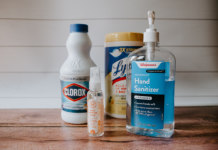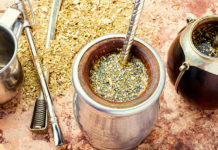No one goes to a hospital thinking they will wind up sicker than when they arrived, but it happens all too often. Hospital Acquired Infections or Health Care Associated Infections (both abbreviated HAI) are frightening. Yet, when you consider the potential consequences of grouping a lot of sick people in one place, then introducing factors like surgical instruments, hypodermic needles, and the element of human error, you set the stage for potential disaster.
In a hospital environment, there are many potential sources of infection; the personnel, patients, or even prescriptions and food. However, the most frequent way infective organisms are transmitted is indirect contact, usually with an object, instrument, or surface, the World Health Organization (WHO) reports.
Hospitals and health care facilities take numerous precautions to prevent infections. By learning what these are, you can become a more informed patient. Some of this information will arm you to ask the right questions, while some of it is just plain interesting.
Antibiotic Stewardship
I talk a lot about the dangers of antibiotic overuse. The overuse of antibiotics causes pathogens to become resistant to their effects. More resistant pathogens can infect more people, more readily, and with greater consequences. According to the CDC, antibiotic resistance leads to about 23,000 deaths per year, and it’s the cause of many HAIs. They also say that 20-50% of all antibiotics prescribed in U.S. acute care hospitals are either unnecessary or inappropriate. Wow!
Responsible health care facilities practice antibiotic stewardship. They appoint someone within their institution to track and measure outcomes from prescribing antibiotics. That person will recommend actions and report regularly to doctors, nurses, and others. The facility can implement procedures like requiring a culture before an antibiotic is prescribed, to ensure it’s really needed. And, nurses can review a patient’s prescriptions each day to keep the patient and doctors informed of what’s going on.
Hand Hygiene
Don’t be afraid to ask a person providing you care when was the last time they washed their hands. Although simple, handwashing provides the most significant preventive measure in lowering infection rates and improving patient health.
Frequent and proper hand-washing is important even after doing something that may be considered “clean” contact, like checking another patient’s blood pressure or pulse. CDC Director Thomas Frieden, MD, MPH, said: “even the most advanced healthcare will not work if clinicians neglect basic practices such as hand hygiene.”
If you’re able to, wash your hands frequently during any hospital stay. Remember the health of your visitors, too. When someone visits you, you can politely remind them to wash their hands when they arrive and again when they leave.
Clean Surfaces
If you stay in a hospital overnight, the personnel should clean the room once a day. Ideally, they will not dust or vacuum near you since these activities can disturb airborne pathogens. They should wipe down everything in the room.
Some facilities now use surfaces that actually resist infection, like televisions, whiteboards, and room carts with special surfaces. There’s even such a thing as an infection control keyboard. Products like these further protects you as well as the hospital’s employees.
Horseshoe Crab Blood… No, Really
This is a little known but fascinating way in which medical professionals have helped prevent infection for decades. Did you know horseshoe crabs have blue blood? You might have seen these arthropods–which are not actually crabs–on beaches of the Atlantic coast. Their blood contains a copper-based respiratory pigment called hemocyanin; thus the blue color. (The Maryland Department of Natural Resources explains here.)
One of the most dangerous ways that bacteria can infect us is through an injection. So it crucial that anything the pierces the body, from a needle to a scalpel, remains sterile. What does that have to do with horseshoe crabs?
A protein in that blue blood, called LAL, causes it to clot when exposed to pathogens like E. coli or salmonella. Pharmaceutical and medical device manufacturers use LAL to test their products for the presence of bacterial endotoxins. This testing procedure has been used and refined, since the 1970s, to make injectable drugs, vaccines, and medical devices safer for humans and even animals.
Unfortunately, populations of the Atlantic horseshoe crab are dwindling. The concern has led to conservation efforts, such as some states banning the use of horseshoe crabs as fishing bait.
So the next time you visit a hospital, use caution and information to protect yourself from infection. Hopefully, understanding a little more about how they are working to protect patients, and the things you can do yourself, will help you stay safer.








